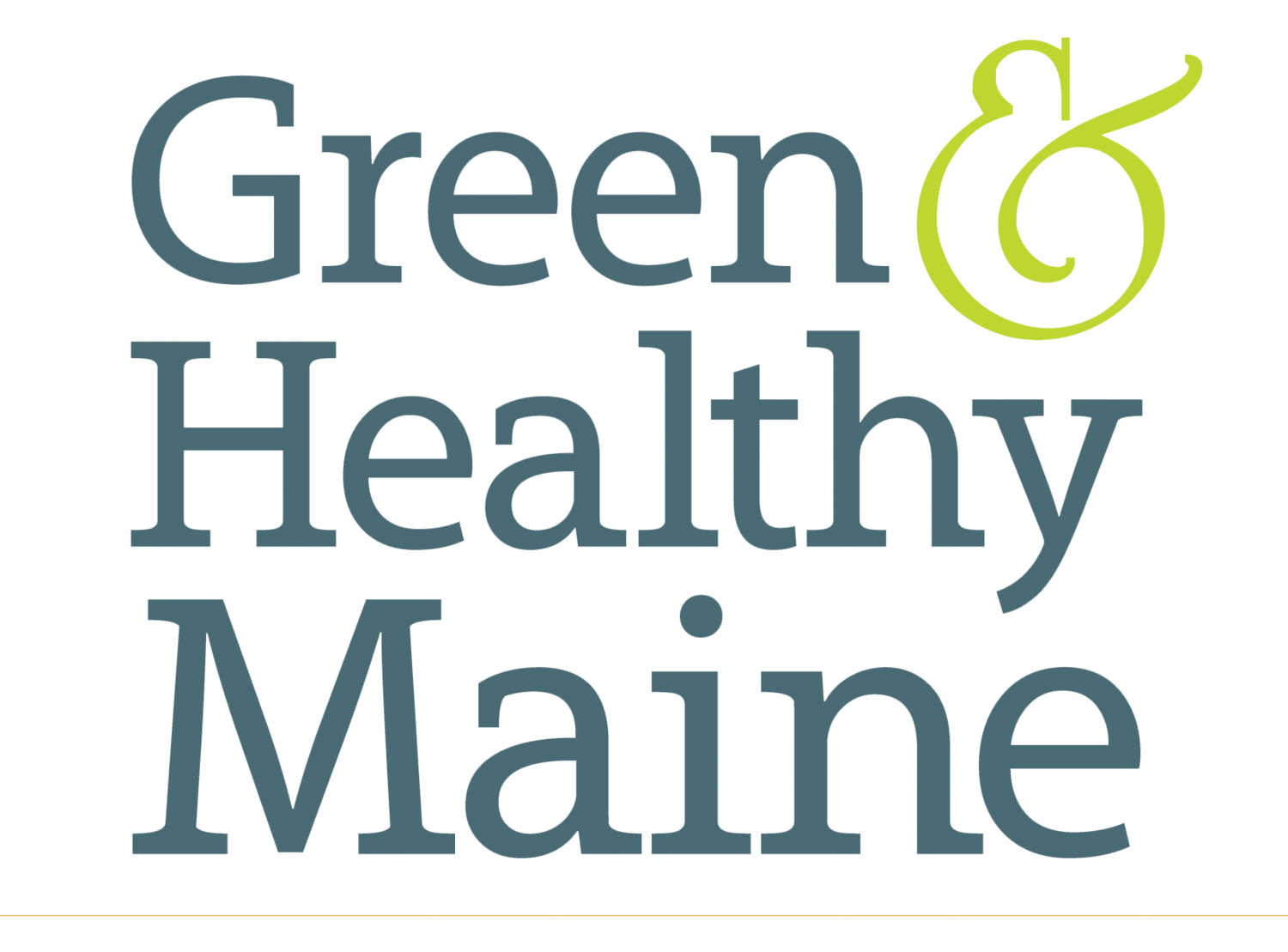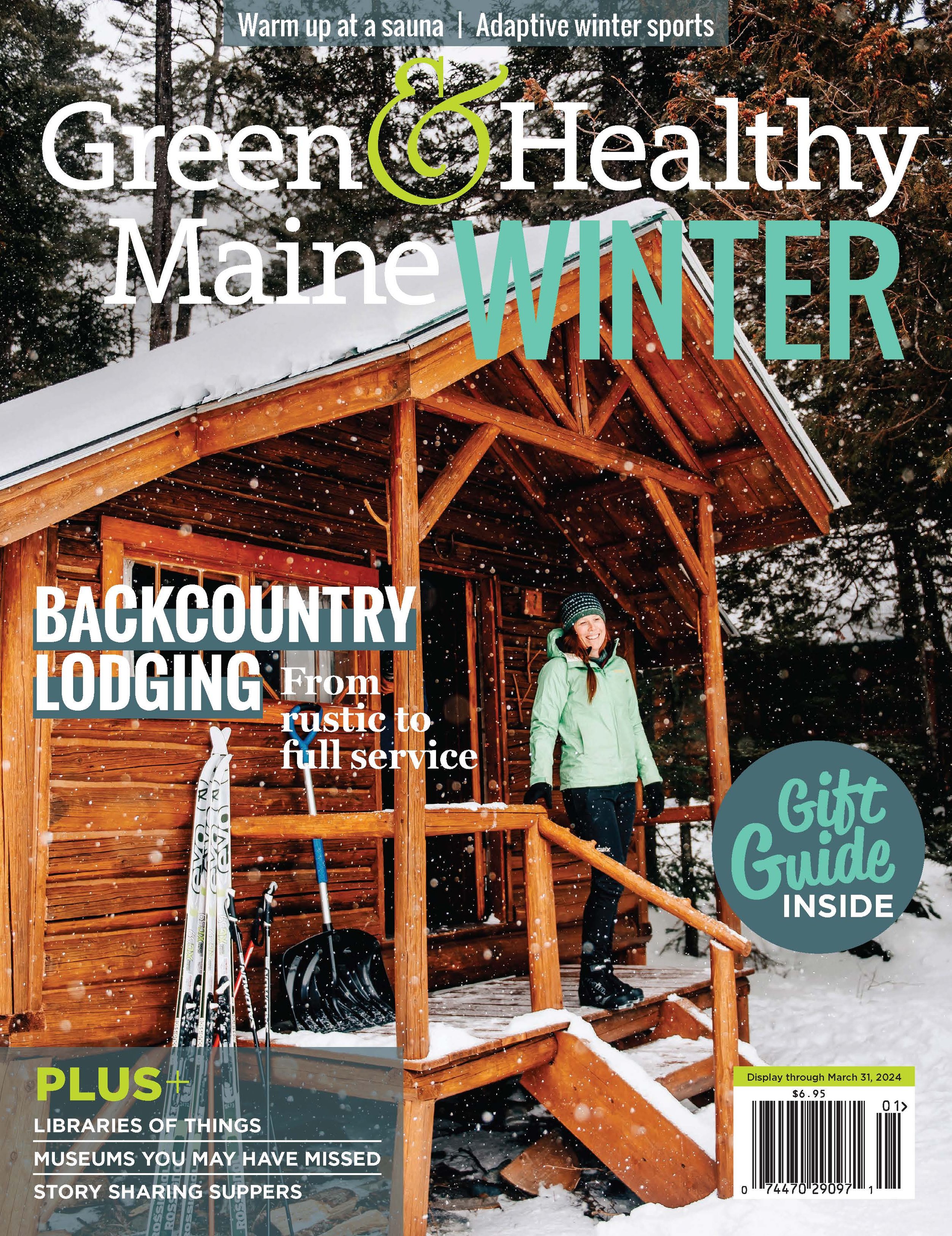Finding community in adaptive winter sports
Monoski students enjoying the view with volunteers from Maine Adaptive. COURTESY PHOTO
By June Donenfeld
“Winter sports have been bringing families together for generations in New England, but it has only been in the past few decades that these sports have been accessible to all.”
AJAY BEAUDOIN, 25, from Lewiston, is an avid member of the Alpine ski team run by Maine’s Adaptive Outdoor Education Center. He found AOEC shortly after it opened in 2015, and he credits their programs with changing his life. “Before getting involved with AOEC,” Beaudoin says, “I never thought I would be able to get to where I am today. They taught me how to be a leader, help others, be who I want to be—and more.”
Beaudoin was born with agenesis of the corpus callosum (ACC), a rare disorder in which the tissue that connects the left and right sides of the brain is partially or completely missing. The condition typically produces delays in attaining developmental milestones, such as walking, talking or reading; impaired motor skills; and challenges with mental and social processing.
If Beaudoin had been born just a few decades earlier, he, like many other people with disabilities, might not have been able to experience the profound pleasures and power of winter sports he does today.
Maine Adaptive volunteer tethering a bi-ski student down the slopes. COURTESY PHOTO
Adaptive sports were first developed to help rehabilitate injured veterans from World War II, the Korean War and the Vietnam War, and the activity that started it all began on a ski slope, when skiers wired skis directly to their prostheses. In its first stages, progress in adaptive winter sports was glacial. Even as recently as the 1980s, mono- and sit-skiers were excluded from the slopes on weekends, and some places didn’t allow them at all.
But the passage of time has brought welcome changes, and now people with disabilities across the spectrum—physical, mental, developmental—can reap the many benefits of outdoor winter sports. Maine is especially rich in adaptive winter sports programs, from Alpine and Nordic skiing, to snowboarding, snowshoeing and more.
These activities bring far more than the thrill of schussing down powdery slopes or making fresh snowshoe tracks through silent, frosty woods; participants also experience significant improvements in their quality of life, as measured in clinical studies by such metrics as mood and physical well-being.
Mike Littlefield witnesses these positive effects every day in his role as director of Sports and Programs at Special Olympics Maine. “The single-most important benefit I continually see is the opportunity for our athletes to just go out and compete,” he says. And this is true regardless of ability. “We have athletes at every skill level who train hard for months leading into a competition. Being able to give them the opportunity to show off their skills and have that competitive feeling is amazing, and it’s awesome to watch them at our events.”
Beaudoin has experienced this personal growth firsthand. “Being part of the AOEC race team has brought me so much joy because it brings people together that love the sport. The team is one big family, and we look to each other for help and support when we need it. Every time we are on the mountain, everyone has their own struggles, but when we are all together, we can resolve them.”
Beaudoin’s father, Andre, has witnessed striking changes in his son thanks to the program. “Ajay has gained confidence in his ability and his leadership skills, and he helps out the coach in any way he is asked, like leading the race team down the mountain,” Andre says. “He’s also learned how to accept more responsibility for himself and his actions, and he supports all the other skiers, even if they aren’t at the same level.”
Maine Adaptive volunteers assisting a student in a snow slider. COURTESY PHOTO
Maine Adaptive volunteers assisting a bi-ski student. COURTESY PHOTO
Benefits for the families of these athletes also abound. As Amy Bannon, managing director of advancement at Maine Adaptive Sports & Recreation (aka Maine Adaptive), observes, “Winter sports have been bringing families together for generations in New England, but it has only been in the past few decades that these sports have been accessible to all. Having access to the equipment, facilities and instruction necessary to hit the slopes brings families together in ways they might not otherwise experience in their day to day [lives].”
To provide these life-changing experiences takes a village—and more. “Adaptive sports and recreational opportunities would not exist without the support of our local communities and dedicated volunteers,” Bannon notes. Maine Adaptive alone has more than 400 volunteers who give freely of their time, expertise, and goodwill—and get as much as they give. “We encourage you to get involved with a local organization,” she adds, “and experience first-hand what access to recreation can do to empower an individual for a lifetime.”
Adaptive outdoor winter sports have come far, but even more opportunities await. Bannon thinks big, envisioning “a future where every ski area, trail network and sports facility is both accessible and welcoming to people with disabilities across the state. But until then,” she says, “adaptive organizations must exist to advocate, bridge access and educate for a brighter, more accessible tomorrow.”
If you would like to get involved in adaptive outdoor sports, here are some resources to help you get started. As Beaudoin says, “Go for it! It’s a one in a million opportunity to be part of a great organization and be part of a family you never thought you would have.”
Adaptive winter sports resources in Maine
Adaptive Outdoor Education Center
adaptiveoutdooreducationcenter.org
Central Maine Adaptive Sports
centralmaineadaptivesports.org
Maine Adaptive Sports & Recreation
maineadaptive.org
Special Olympics Maine
somaine.org
Veterans Adaptive Sports and Training (VAST) at Pineland Farms
pinelandfarms.org
Out for a Nordic ski with participants from the Challenged Athletes Foundation. PHOTO COURTESY OF THE ADAPTIVE OUTDOOR EDUCATION CENTER








On the cover: Judi steps out of a cabin in the 100-Mile Wilderness to fresh falling snow.